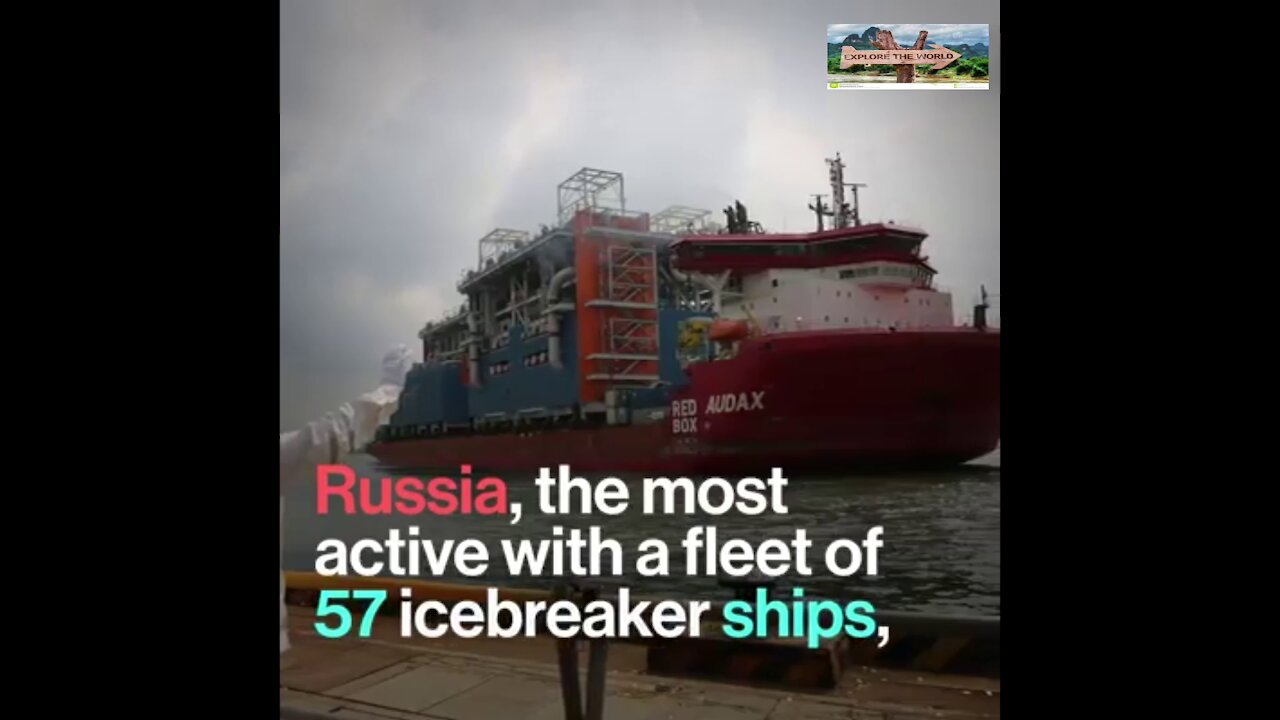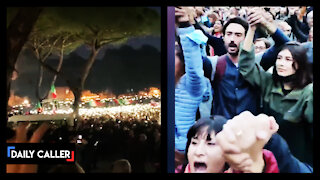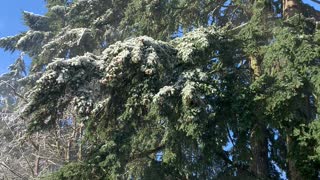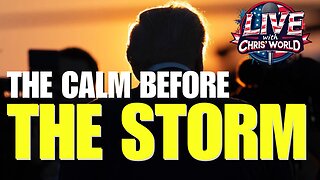Premium Only Content

The Arctic sea ice is melting dramatically, but several countries see it as an economic opportunity
Polar ice caps are melting as global warming causes climate change. We lose Arctic sea ice at a rate of almost 13% per decade, and over the past 30 years, the oldest and thickest ice in the Arctic has declined by a stunning 95%.
If emissions continue to rise unchecked, the Arctic could be ice-free in the summer by 2040. But what happens in the Arctic does not stay in the Arctic. Sea ice loss has far-reaching effects around the world.
1. Temperatures
The Arctic and Antarctic are the world’s refrigerators. Since they are covered in white snow and ice that reflect heat back into space, they balance out other parts of the world that absorb heat. Less ice means less reflected heat, meaning more intense heatwaves worldwide. But it also means more extreme winters: as the polar jet stream—a high-pressure wind that circles the Arctic region—is destabilized by warmer air, it can dip south, bringing the bitter cold with it.
2. Coastal communities
The global average sea level has risen by about 7–8 inches since 1900 and it’s getting worse. Rising seas endanger coastal cities and small island nations by exacerbating coastal flooding and storm surges, making dangerous weather events even more so. The glacial melt of the Greenland ice sheet is a major predictor of future sea-level rise; if it melts entirely, global sea levels could rise 20 feet.
3. Food
Polar vortexes increase heat waves, and the unpredictability of weather caused by ice loss is already causing significant damage to crops on which global food systems depend. This instability will continue to mean higher prices for you and growing crises for the world’s most vulnerable.
4. Shipping
As ice melts, new shipping routes open up in the Arctic. These routes will be tempting time-savers, but incredibly dangerous. Imagine more shipwrecks or oil spills like the Exxon-Valdez in areas that are inaccessible to rescue or clean-up crews.
5. Wildlife
When there’s less sea ice, animals that depend on it for survival must adapt or perish. Loss of ice and melting permafrost spells trouble for polar bears, walruses, arctic foxes, snowy owls, reindeer, and many other species. As they are affected, so too are the other species that depend on them, in addition to people. Wildlife and people are coming into more frequent contact – and often conflict – as wildlife encroach on Arctic communities, looking for refuge as their sea ice habitat disappears.
6. Permafrost
Arctic ice and permafrost—ground that is permanently frozen—store large amounts of methane, a greenhouse gas that contributes to climate change. When it thaws, that methane is released, increasing the rate of warming. This, in turn, causes more ice and permafrost to thaw or melt, releasing more methane, causing more melting. As we lose more ice more quickly and see more rapid permafrost melt, we will start seeing the worst climate-change predictions come true
-
 0:37
0:37
WFTX
4 years agoSeveral countries seeing a rise in COVID cases
3551 -
 3:00
3:00
The Daily Caller
3 years agoEnormous Protests Break Out In Several Countries Over Vaccine Mandates
1.95K28 -
 11:54
11:54
Dave's Hot Cars For Sale
3 years ago $0.02 earnedMelting ice 2020 Portland
95 -
 0:25
0:25
WFTX
4 years agoBomb threat at Florida Dept. of Economic Opportunity
13 -
 0:31
0:31
Newsy
4 years agoSeveral EU Countries Suspend AstraZeneca COVID Vaccine Use
1.62K4 -
 58:25
58:25
Donald Trump Jr.
14 hours agoMike Benz Takes us Inside the Global Censorship Complex | Triggered Ep264
129K128 -
 28:36
28:36
Scary Mysteries
19 hours agoMISSOURI'S 5 Darkest True Crime Nightmares
25K2 -
 3:41:04
3:41:04
LIVE WITH CHRIS'WORLD
14 hours agoLIVE WITH CHRIS’WORLD - Todays News Will Impact Tomorrows Decisions
17.9K4 -
 22:24
22:24
Jasmin Laine
13 hours agoTrump HUMILIATES Carney: “Too Liberal for Me”—CBS Host GRILLS Him Live
13.2K10 -
 1:49:33
1:49:33
Anthony Rogers
14 hours agoThis Stream Will Make You Want to Reinstall FORTNITE
7.74K